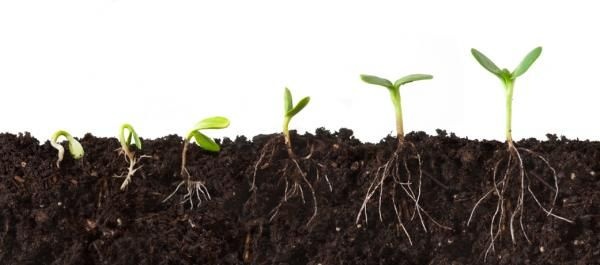Seed germination:
For the germination of seeds, they must arrive at a suitable location and be there at time favourable for the germination and growth.

Seed germination is a process by which a seed embryo develops into seeding. During germination, embryo soaks up water which causes it to swell, splitting the seed coat. Root is the first structure that emerges from radicle present in seed. It grows rapidly and absorbs water and nutrients from soil. In the next phase, plumule develops into tiny shoot which elongates and come out of soil.
On the basis of elongation of hypocotyl and epicotyl, there are two types of germination. In epicotyl germination, the hypocotyl elongates and forms a hook, pilling cotyledons above ground. Beans, cotton and papaya are the examples of seeds that germinate in this way. In hypogeal germination, the epicotyl elongates and forms the hook. In this type of germination, the cotyledons stay under ground. Pea, maize and coconut germinate in this way.
Conditions of seed germination:
Seed germination depends on both internal and external conditions. The internal conditions include a live embryo and sufficient food storage. The most important external conditions include water, oxygen and favourable temperatures.
Water (moisture): Seeds of most plants have low water contents, and germination cannot occur until seed coat and other tissues have taken in water. The absorbed water used in digestion of stored food and it also helps in the elongation of hypocotyl and epicotyl.
Oxygen: It is essential for the respiration in cells of embryo.
Temperature: Seeds differ greatly in their temperature requirements for germination. The optimum temperature for the germination of seeds of most plants ranges from 25-30 degree C.



